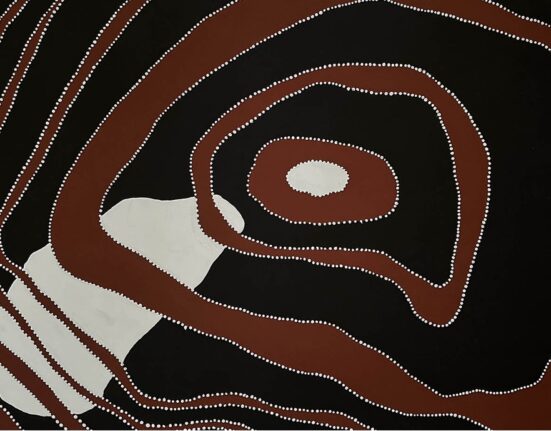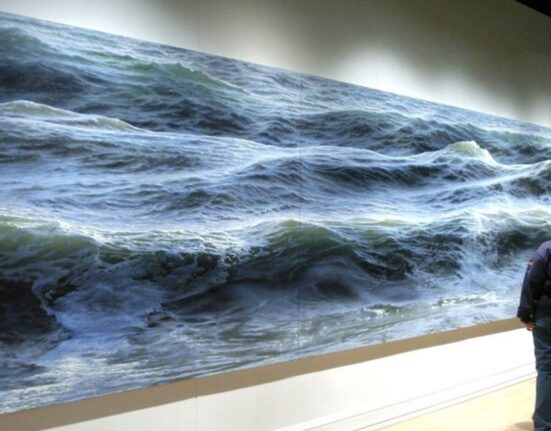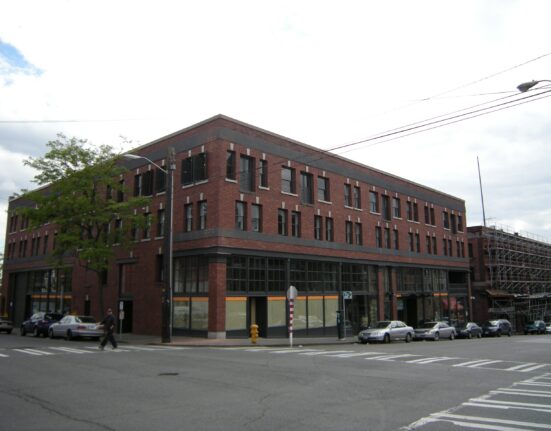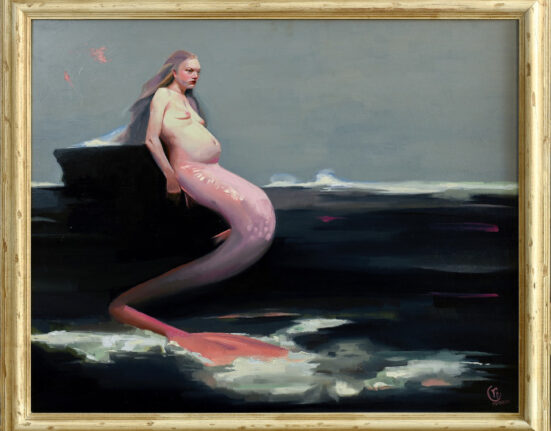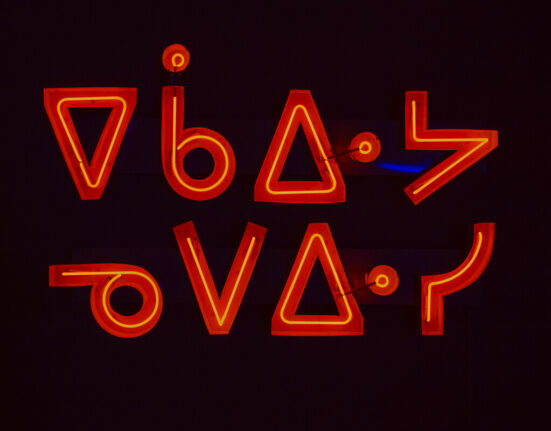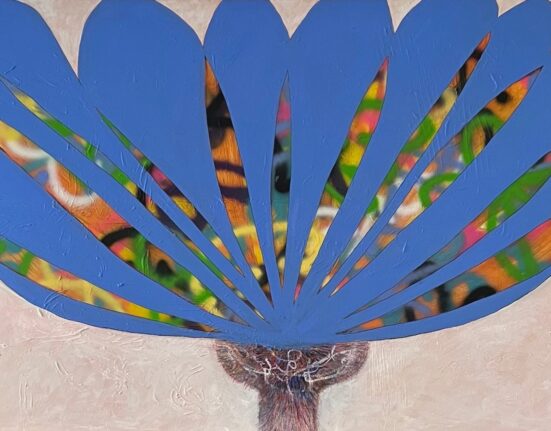Pope.L, an uncompromising conceptual and performance artist who explored themes of race, class and what he called “have-not-ness,” and who was best known for crawling the length of Broadway in a Superman costume, died on Saturday at his home in Chicago. He was 68.
The death was confirmed by his gallery, Mitchell-Innes & Nash. No cause was given.
By 2001, when he began “The Great White Way: 22 Miles, 9 Years, 1 Street, Broadway, New York,” as the performance was ultimately titled, Pope.L was already well known in the art world for a career that comprised every medium from writing to photography, from painting to sculpture, and from performance to straight theater.
His abiding themes were the intersecting difficulties and distinctions that he experienced as a Black American and a son of the working class. But the impact of his work came less from the literal sense of its surface contents, which could be difficult to decode, than from its sheer intensity, and from his willingness to say and do things others wouldn’t. Especially when performing, he used his own bodily presence to shock viewers back into their own.
His first “crawl,” as he called them, took place in Times Square in 1978, when he moved on his belly across 42nd Street in a pinstriped suit with a yellow square sewed to the back. Getting horizontal in a relentlessly vertical city was a simple gesture that punctured most of the collective delusions that made that city run, at once lampooning and rejecting the pose of an upright citizen. It dramatized, with a potent mixture of satire and resistance, the experience of subjection particular to Black Americans. And the incongruity of a man in business attire sprawled out on the sidewalk drew attention to the homeless and disenfranchised people the average upright citizen habitually ignored.
The same year, in SoHo, he performed “Thunderbird Immolation a.k.a. Meditation Square Piece” in front of the building where the influential dealers Leo Castelli and Ileana Sonnabend had their galleries. Sitting cross-legged on another square yellow cloth, surrounded by a circle of loose matches, Pope.L evoked the Buddhist monks who had famously immolated themselves in Vietnam by pouring alcohol and Coca-Cola over his head, using a fortified wine heavily marketed in poor Black neighborhoods. Provocative, ambitious and more than a little funny, it was emblematic of his practice. (When someone came out of the building to complain, he politely gathered his things and left.)
“Today people often want art to have a clear and even redemptive political message, but Pope.L gave us neither,” Scott Rothkopf, director of the Whitney Museum of American Art, said in an interview. “He had a brilliant capacity to distill difficult, even horrifying truths about American society into strange and challenging work. It can be truculent, or funny, or both, but it’s never easy.”
In a 2019 video interview for the Museum of Modern Art, which acquired a number of his early performance works ahead of “member,” his retrospective that year, Pope.L spoke about creating another crawl in Tompkins Square Park in 1991. “I had been writing a lot,” he said. “I mean, that’s all I did. I was sort of getting written out, and I needed to find a more direct way of making things happen culturally.”
What he encountered, the critic C. Carr wrote in an essay included in the 2002 book “William Pope.L: The Friendliest Black Artist in America,” was another Black man, a local, who rushed over to ask if he was all right; to upbraid the white cameraman hired to document the performance; and finally to exclaim, in tears, “I wear a suit like that to work!”
For “The Great White Way,” which he began in 2001 and continued through 2009, Pope.L crawled the length of Broadway, from New York Harbor to the Bronx, in segments as short as just a few blocks depending on what his elbows and knees could take. He wore a Superman costume, minus the cape; gardening gloves; and a skateboard tied to his back.
Among a broad range of other performances that the curator Valerie Cassel Oliver, writing in the catalog for “member,” called “existential spectacles of absurd anxiety,” Pope.L ate pieces of The Wall Street Journal while sitting on a toilet; covered himself in flour, mayonnaise, milk and other white substances; marshaled volunteers to pull an eight-ton truck by hand through Cleveland; and copyrighted another mordant jab as an epithet for himself: “the friendliest Black artist in America.” He was also a longtime teacher at Bates College in Maine and for the last dozen years taught in the visual arts department of the University of Chicago.
The 2019 MoMA show, which presented documentation and materials connected to 13 early performances, was one of a trio of concurrent shows. There was also a new installation at the Whitney and “Conquest,” sponsored by the Public Art Fund, a lineup of 140 volunteers who crawled from Greenwich Village to Union Square.
“From its very earliest beginnings,” Pope.L told Interview magazine in 2013, “the crawl project was conceived as a group performance. Unfortunately for me, at that time, I was the only volunteer.”
Earlier this year, Pope.L built an impossible-to-enter white room in the middle of the 52 Walker gallery in Manhattan, as part of “Impossible Failures,” a show that also included work by the artist Gordon Matta-Clark. A current show, “Hospital,” at the South London Gallery in London through Feb. 11, centers on a group of collapsing white towers. A toilet atop the middle tower looks back to Pope.L’s act of eating pieces of The Wall Street Journal.
“In the course of two hours at an opening,” his gallerist, Lucy Mitchell-Innes, said, “he came up with what he wanted to do, and then it sort of transmogrified into this incredible new piece. It did what he always does, which is give it relevance for today. It became a metaphor for collapsing social structures: the collapsing economy, the collapsing international politics, the collapsing of the rich world and the poor world. You thought of all those things when you looked at it.”
Pope.L was born William Pope on June 28, 1955, in Newark to Lucille Lancaster and William Pope. He spent part of what he remembered as an unstable childhood in nearby Keyport, and part of it in the East Village with his grandmother Desmonda Lancaster, an artist who showed quilt pieces at the Studio Museum in Harlem in the 1960s.
He is survived by his partner, Mami Takahashi; a younger brother, Eugene Pope; and a son, Desmond Tarkowski-Pope.L.
According to Ms. Mitchell-Innes, “Pope.L,” a portmanteau of the artist’s original surname and his mother’s, was coined by his students at Bates College in the mid-1980s. He adopted it and went by “William Pope.L” for nearly three decades before dropping the “William.”
Pope.L studied at Pratt Institute in Brooklyn and earned a bachelor’s degree at Montclair State College (now Montclair State University) in New Jersey in 1978. He also studied at the Whitney Museum Independent Study Program, the Mason Gross School of the Arts at Rutgers University and the Mabou Mines theater on St. Mark’s Place in Manhattan, which the playwright Lee Breuer described as teaching “a no man’s land between experimental theater and performance art.”
Jessica Stockholder, a fellow professor at the University of Chicago, described Pope.L as a deeply committed and effective teacher.
“He was wide open to all different kinds of people,” she said by phone, “and very empathetic and concerned about people’s well-being.”
Ebony Haynes, who curated “Impossible Failures,” concurred.
“He has this way of listening to everybody,” she said. “He gave you the floor — without even knowing you, he knew that in the very least you, and everyone, deserves to be heard.”


